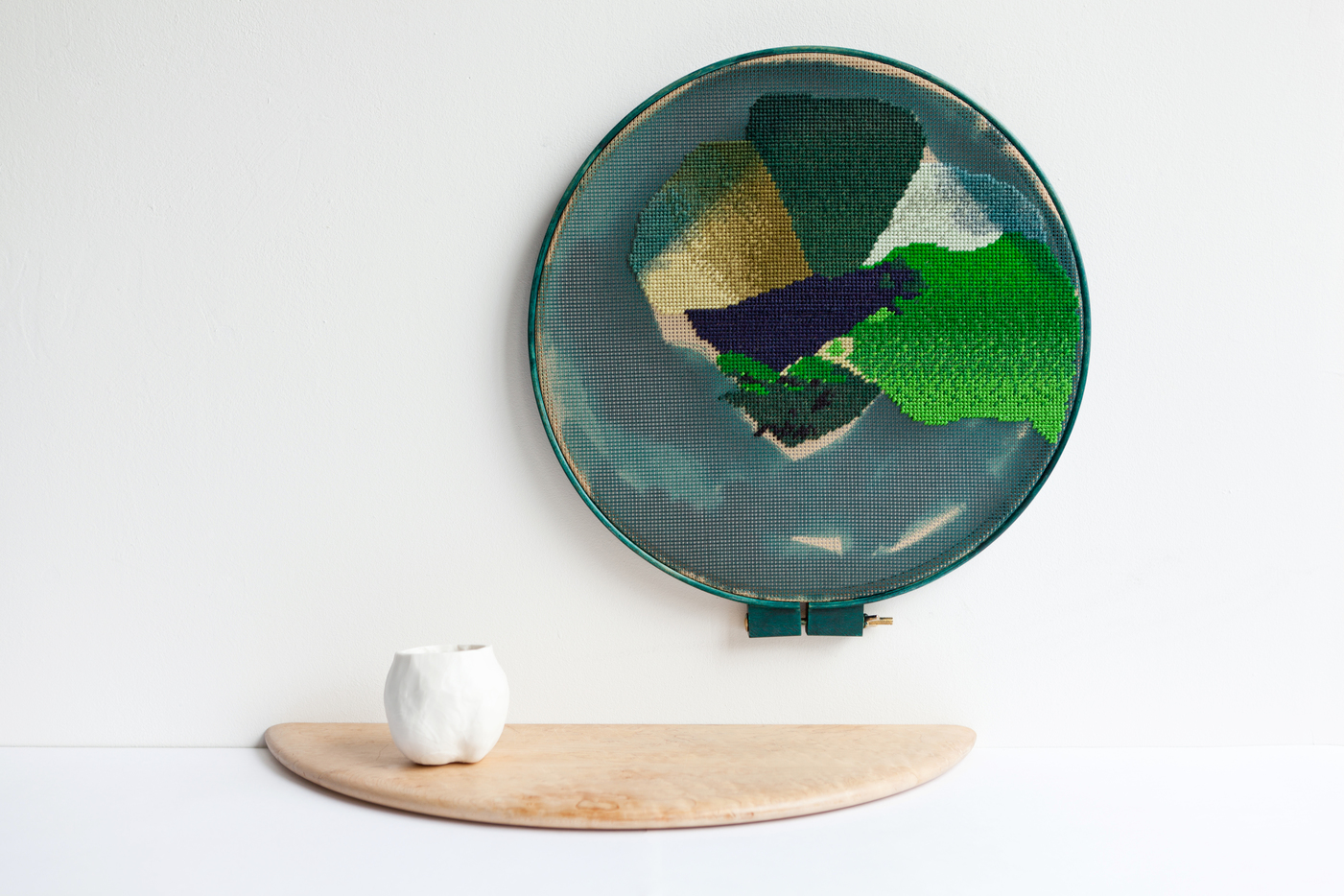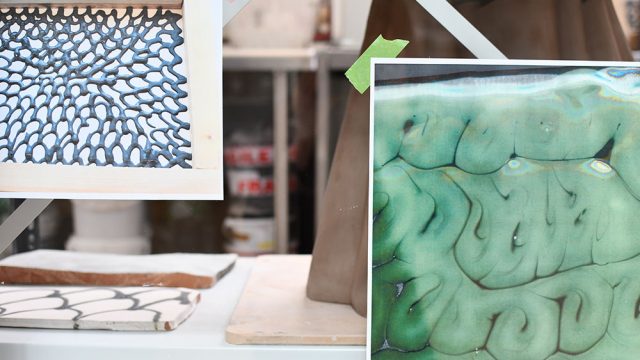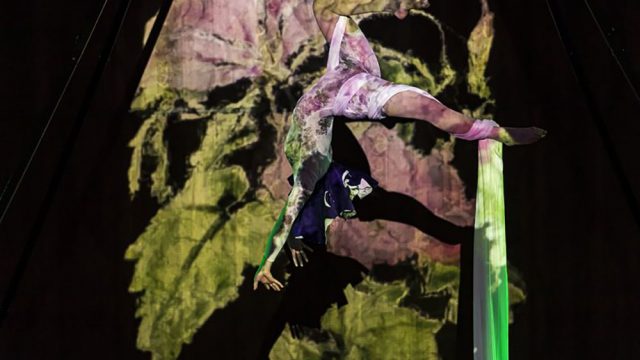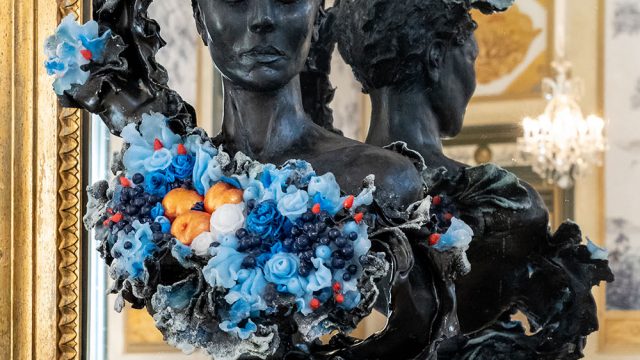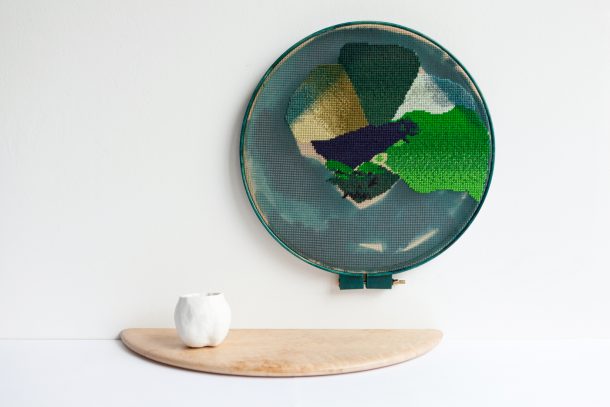
Bethan Lloyd Worthington, 2015
Porcelain, needlepoint tapestry, wood, dye
If you were to (somewhat arbitrarily) type ‘landscape’ into the V&A ceramics database, it would return 2088 results. I strongly suspect that this doesn’t pick up many of the more tenuously or conceptually related objects, but it’s an indication of the scale of the subject.
Ceramics deals with landscape in so many ways – employing depiction, representation, embodiment – and it’s enticing to think about how these might be utilised. I’ve long been interested in surface decoration, but printed and painted landscapes can easily be dismissed as twee (though it does help when they’re purple, which is gorgeously mysterious), whether souvenir or estate service, they tend to be of an era when only an idealised landscape captured the popular imagination. Elsewhere there are mocha ware trees and weirdly three dimensional earthworm designs. Endless landscaped backgrounds, whether painted or agate-ware. Similarly afterthought-like are the plinths and stands for figurines. Painted as a literal and pragmatic solution to the fact that the figures must stand on something or fall over, for me they hold exciting potential reimagined as a cut-out chunk of earth and turf.
There are all kinds of familiar conventions of horizon – incised lines, banded glazes and washes – natural developments when using a wheel. There are the ‘earthy’ brown pots, heavy grog and lumpen and iron-sheened. These may employ soil and ash from specific locations and be fired in a pit – an umbilically direct relation with the land. There are the sculptures like rocks, there is stratified geological clay and there is Lucie Rie’s incredible vase: like mountains emerging through a cool glaze mist you can almost feel on your nose. This is all further complicated by the fact that in archaeology ceramics are so often the thing found in the landscape, suddenly showing you a domestic or ritual vignette in what had looked like wilderness or pasture.
As a sum total, it’s a powerful array of techniques and associations, all of them present in our subconscious understanding, but perhaps none of it in isolation represents the way we talk about landscape right now. In contemporary writing and thinking on nature, place and landscape, there’s a sense of viewing things from many perspectives at once. We’ve long set aside linearity and picturesque framing, we’re not only making one path by walking it or viewing one celebrated vista with blinkers but hovering above as satellites, writhing in the damp soil of the underland, fending off myths, playing with rurality, autobiography, memory, brute use and beauty.
October 2016 – March 2017
Generously supported by the William Brake Charitable Trust
bethanlloydworthington.com
